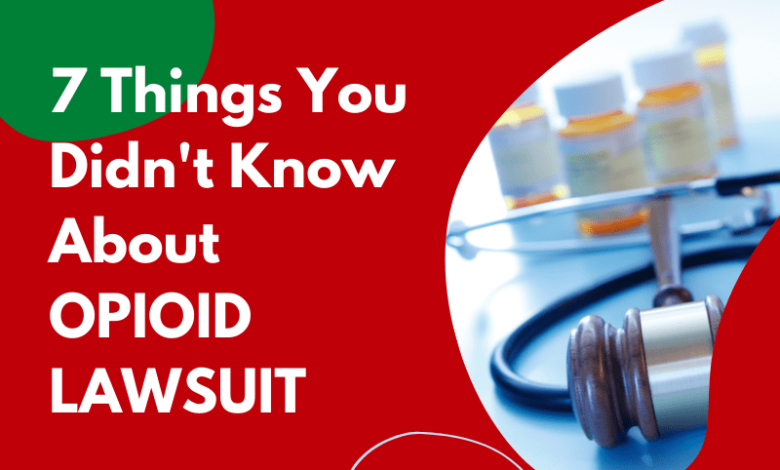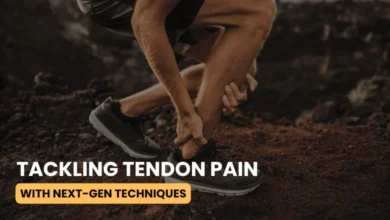
There is an opioid crisis in the U.S., and the legal fight is heating up. There are numerous plaintiffs at each government level and also defendants involved in opioid drug production. The cost of this crisis is estimated to be worth billions of dollars, and there are over 200,000 overdose adults from the late 1990s. We can say the stakes are high.
Let’s now look into some of the things that you never knew about the opioid lawsuit:
1. Why is the Case in Ohio and How Will It Work?
Various lawsuits are opioid-related in the U.S. courts. As a result, a judicial panel came together and saw it fit that one federal judge would oversee the pending lawsuits. The judge would ensure that everyone was on the same page. The lawsuit is referred to as the National Prescription Opiate Litigation.
The Northern part of Ohio was chosen for specific reasons. For starters, the area offered some form of convenience for the defendants.
The main issue with multidistrict litigation is that things never go as far. Most of the cases reach the settlements before a trial takes place. Everyone gets into the same room, and there is a person there to ensure everyone gets on the same page. A settlement is better than going to trial.
2. What was Going to Take Place on October 21st?
Deadlines usually inspire some form of urgency. The judge would take the lawsuits in his district and oversee the trials; the proceedings would take place on October 21st.
The main focus was on the bellwether trial. The defendants and plaintiffs were watching closely, and their main focus was on gauging the strength of the arguments and the money that was at stake. Other details would be used during the negotiations.
With settlements taking place, there was no need for a trial. Some of the large drug distributors, including Teva Pharmaceuticals, agreed to the settlement worth $260 million. The details are yet to be approved.
3. Who are the Defendants?
The defendants are one of the biggest names in the healthcare sector, and some of them are involved in the bellwether trial that will take place on October 21st. There are also pharmacies and physicians, including Albertsons and Walmart. The list of defendants is long; however, we’ve managed to list a few of them.
4. What are the Charges Against the Defendants?
Pharmaceutical firms are accused of playing a key role in the opioid crisis in a bid to improve their profit margins. Drug manufacturers usually market their products aggressively; however, they fail to mention the addiction factor and the risk of an overdose. On the other hand, the distributors are unable to detect suspicious orders.
In the U.S., opioid medications would be prescribed to patients with a terminal illness. During the late 90s, the pharmaceutical sector would start to market the drugs aggressively, stating they have a wide range of applications.
The pharmaceutical organizations were aware of the risks of addiction and abuse when people take opioids. It means the marketing materials these companies would use were misleading.
The defendants have maintained that the medication was highly regulated. The federal officials would also monitor each transaction. Some of the pills were being sold in the communities, and they would be shipped when a prescription was written by a licensed physician.
The case is complicated. However, we want to understand the responsibility of the pharmaceutical sector regarding the man made epidemic.
5. Who are the Plaintiffs?
The list of plaintiffs is long, and they’re from at least 2,500 cities. The number of plaintiffs has gone up in the recent month, and there have been more settlement deals. Big Pharma went ahead to come up with the “negotiation class.”
The concept allows the advocates to hammer out settlement deals on behalf of each city if a county has opted out of the initial arrangement.
When a plaintiff reaches a deal with a particular firm, the members in the negotiation class will cast their votes. If the majority approves and the judge signs off, the deal will be binding and inked. It will resolve lawsuits against the firm in the federal case. The firm will also be safe from future lawsuits by counties and cities at the federal level.
In a normal class action, if there is a class representative, they can determine whether a settlement is suitable or not. People cast their votes. The input is much more significant, and the territory is uncharted.
Plaintiffs prefer the arrangement since they have better leverage and bargaining power. Defendants also prefer this arrangement because of the fear of paying billions of dollars during a settlement and being sued by other counties and cities.
6. What the Plaintiffs Want
The plaintiffs are after compensation since they have spent a significant sum when it comes to crime and healthcare issues considering the opioid pills are addictive. If you look closely, there is some friction between local governments and state attorneys. They clash frequently over different matters, including the negotiation class and the person supposed to take the lead.
You should keep in mind this is a civil case, and some lawmakers are also calling for criminal charges of which the owners and the executives of the drug companies are responsible.
7. Are There Detractors in the Deal?
There are numerous local governments and state attorneys who are objected to by detractors. They have stated that the plaintiffs are supposed to demand more during the settlements, especially if the litigation is to come to an end.
Final Thoughts
For the defendants who are yet to settle, even if there is a settlement in a bid to avoid the bellwether trial as other pharmaceutical firms did, the companies are still supposed to answer to all the other lawsuits. When you settle with these firms individually, the counties opt out of the money they were to get if there was a negotiation class settlement. The majority of the defendants who had been named in the bellwether trial opted for out-of-court settlements.






